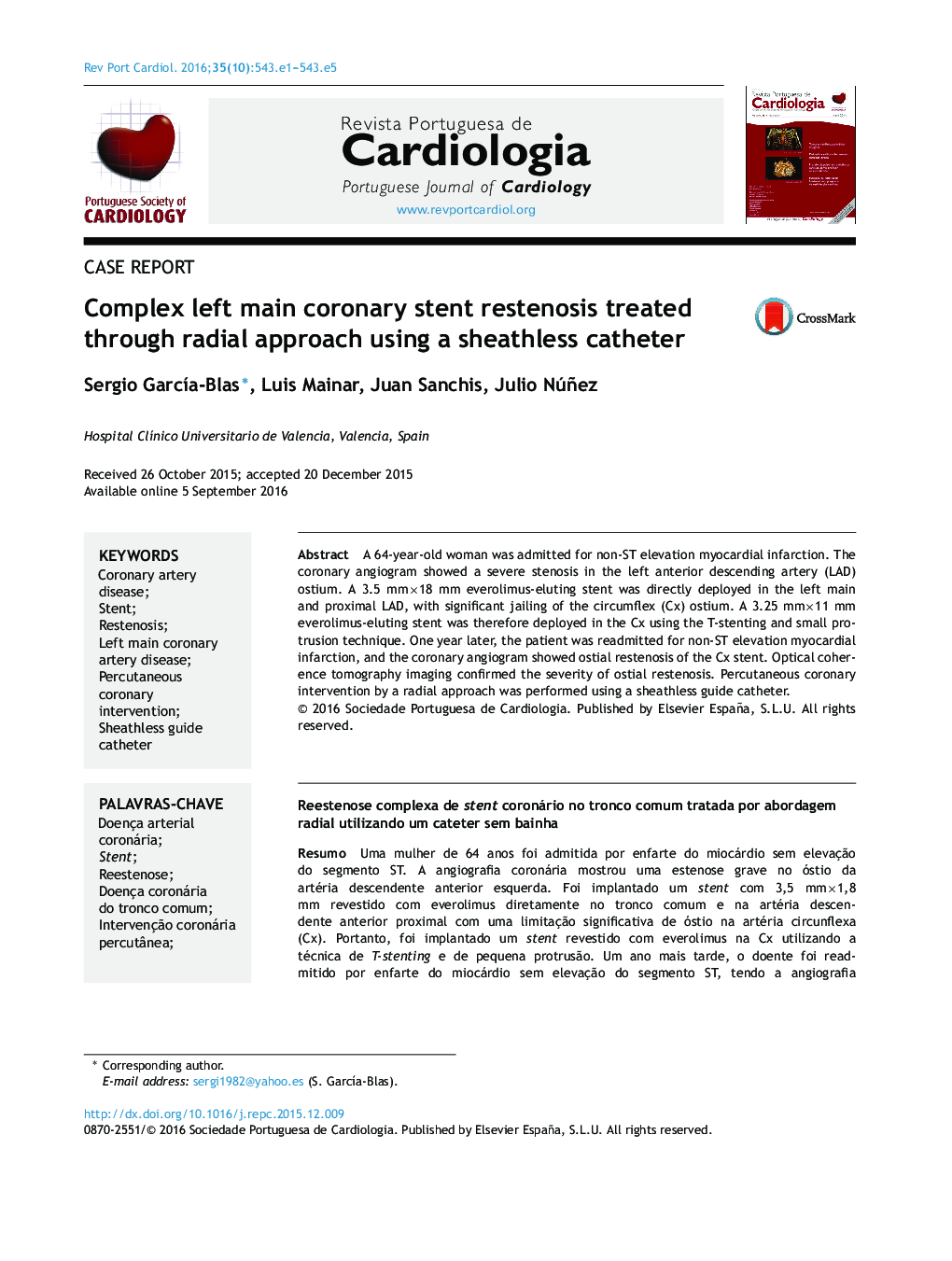| Article ID | Journal | Published Year | Pages | File Type |
|---|---|---|---|---|
| 5126534 | Revista Portuguesa de Cardiologia | 2016 | 5 Pages |
A 64-year-old woman was admitted for non-ST elevation myocardial infarction. The coronary angiogram showed a severe stenosis in the left anterior descending artery (LAD) ostium. A 3.5 mmÃ18 mm everolimus-eluting stent was directly deployed in the left main and proximal LAD, with significant jailing of the circumflex (Cx) ostium. A 3.25 mmÃ11 mm everolimus-eluting stent was therefore deployed in the Cx using the T-stenting and small protrusion technique. One year later, the patient was readmitted for non-ST elevation myocardial infarction, and the coronary angiogram showed ostial restenosis of the Cx stent. Optical coherence tomography imaging confirmed the severity of ostial restenosis. Percutaneous coronary intervention by a radial approach was performed using a sheathless guide catheter.
ResumoUma mulher de 64 anos foi admitida por enfarte do miocárdio sem elevação do segmento ST. A angiografia coronária mostrou uma estenose grave no óstio da artéria descendente anterior esquerda. Foi implantado um stent com 3,5 mmÃ1,8 mm revestido com everolimus diretamente no tronco comum e na artéria descendente anterior proximal com uma limitação significativa de óstio na artéria circunflexa (Cx). Portanto, foi implantado um stent revestido com everolimus na Cx utilizando a técnica de T-stenting e de pequena protrusão. Um ano mais tarde, o doente foi readmitido por enfarte do miocárdio sem elevação do segmento ST, tendo a angiografia coronária revelado reestenose no óstio do stent na Cx. A tomografia de coerência ótica confirmou a gravidade da reestenose do óstio. Foi realizada uma intervenção coronária percutânea através de abordagem radial, utilizando um cateter sem bainha.
